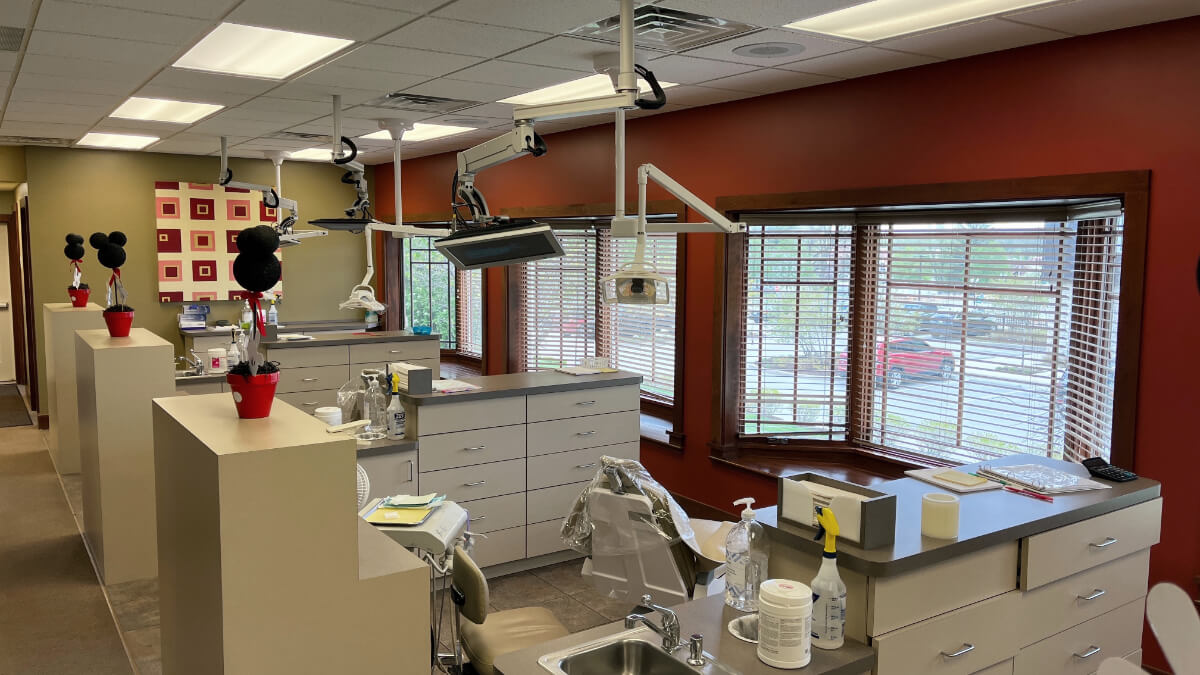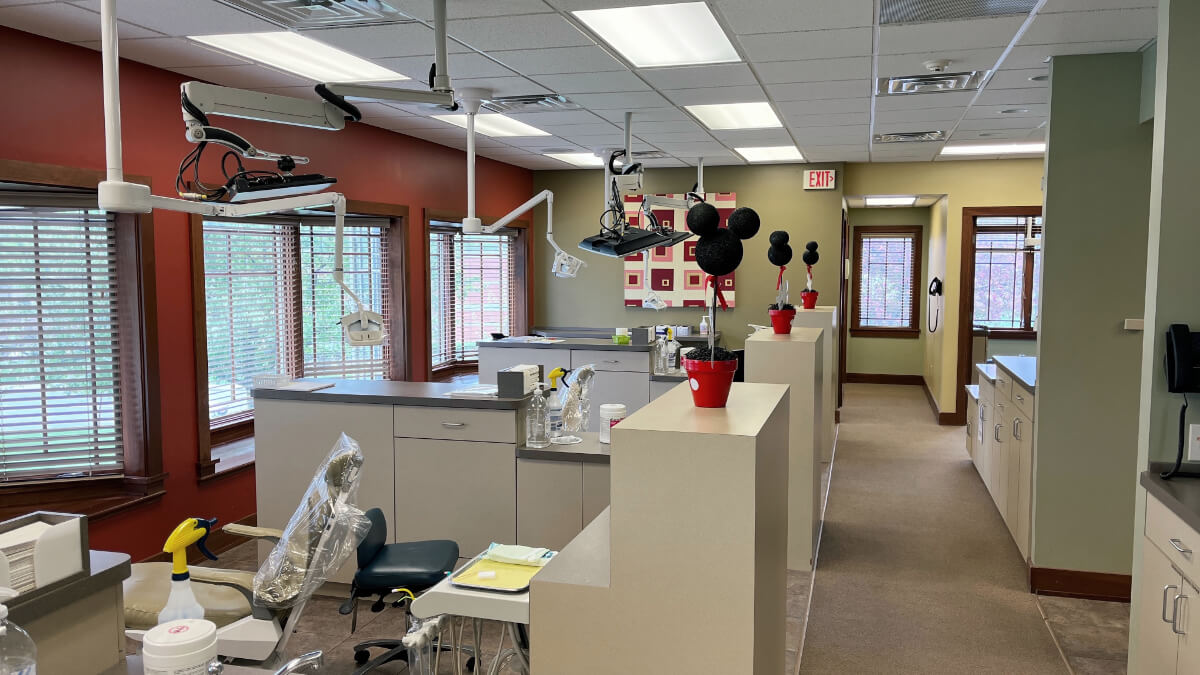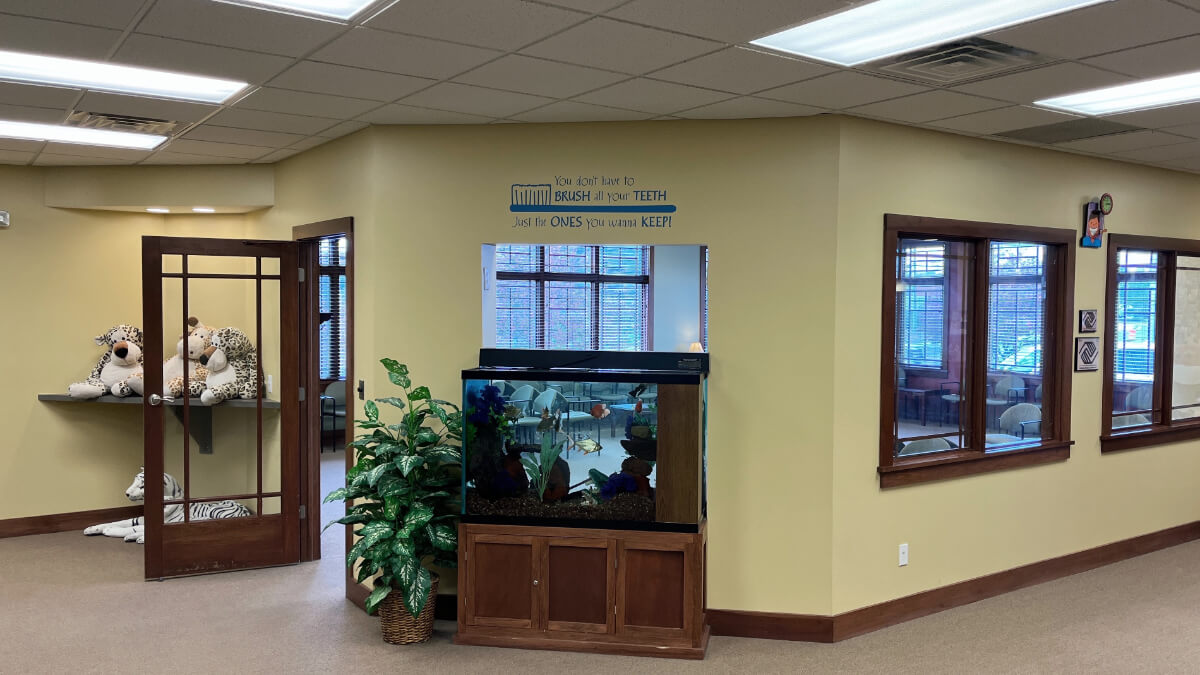Space Maintainers
A space maintainer is a dental appliance placed inside a patient’s mouth to maintain space for future teeth or for future dental treatment. A space maintainer is typically placed after a tooth is lost or extracted. A space maintainer is sometimes confused with an orthodontic retainer. They are similar; however, a space maintainer is best used to minimize future orthodontic needs while an orthodontic retainer keeps teeth from moving or shifting following orthodontic treatment.
What Are Space Maintainers?
A space maintainer (spacer) is a dental appliance placed inside a patient’s mouth to maintain space for future teeth or for future dental treatment. It can be removable or attached (fixed) to the teeth. A space maintainer can be made of many different materials. We prefer to use attached space maintainers made of a combination of orthodontic bands and wires. This ensures strength and functionality. An attached spacer is harder to lose. Using strong materials make them difficult to break.



There are many different designs of space maintainers. The decision of which is the best design for your child is based on the number of teeth that are lost or removed, the amount of time needed, cooperation, and their medical health. A space maintainer is not always necessary. There are times when we will observe the space created by an extraction to determine if the new tooth will erupt before other teeth migrate into that space. This is more common with older patients.
The simplest space maintainer we use is call a band and loop. As the name implies, it is made with an orthodontic band that is placed around the tooth adjacent to the extraction site. A wire in the shape of a loop is soldered to the band. This loop replaces the area where the extracted tooth existed and keeps the banded tooth from moving forward. These space maintainers are small and strong. They are easily cleaned, and children easily adjust to their presence. They usually keep the space for one missing tooth and should not be used in areas where multiple teeth have been removed.

For the lower arch (mandible), we utilize a lower lingual arch space maintainer to keep space for multiple missing teeth. This spacer usually involves using both adult molars as anchors. With a lower lingual arch space maintainer, a wire runs along the entire lower arch and rests on the backs of the lower front teeth. This keeps the adult molars from moving forward. The appliance is easily cleaned and is tolerated well. A lower lingual arch space maintainer can also be used in conjunction with orthodontic treatment.
For the upper arch (maxilla) that is missing multiple back teeth, a Nance appliance is used. The Nance appliance is like the lower lingual arch space maintainer. The Nance space maintainer usually attaches to the adult molars on the upper arch and a wire runs along the roof of the patient’s mouth. A resin button can be placed around the wire where the appliance touches the roof of the mouth. This spacer is easy to keep clean and is well tolerated by patients. It keeps the molars back to allow for the new adult teeth to erupt into the proper place.
FAQ’s
Why do we place space maintainers?
We place space maintainers to simply maintain space for the eruption of teeth or to maintain space for future dental treatment such as an implant. There are many reasons this might occur. The most common reason for the use of a space maintainer is a tooth lost to dental decay or abscess. As new adult molars come into the mouth, they typically like to move forward. If there is a missing baby molar, the adult molar has a high potential to move into that space. This will eliminate the space needed for that replacement tooth to erupt normally. This is why space maintainers are so important. Without a space maintainer we can find ourselves in very difficult orthodontic situation. In extreme cases, an adult tooth might become impacted and not come in at all. These adult teeth may need to be removed.
A space maintainer remains in the mouth until the eruption of the adult tooth replaces the lost baby tooth. If the space maintainer becomes loose or falls out, it can usually be re-glued. It is important that if your child’s space maintainer becomes loose or falls out, you see our office as soon as possible. Teeth can shift rapidly, and we would be disappointed if we lose any space that we worked so hard to keep. If teeth have shifted, we can adjust the shape of some spacers to accommodate for this movement. It is important to bring a lost space maintainer with you to your appointment to have it evaluated for reuse.
How do we make and place space maintainers?
The process for making and delivering (placing) space maintainers involves two steps. First, we take an impression of the area needing the appliance. We place orthodontic bands on the teeth that will act as the anchor for our space maintainer. Once we find the right fit, an impression will be taken in a material known as dental compound. It is warm to the touch when placed, and will cool, leaving an impression of the remaining teeth. This will be used to make a model to create the appliance. The impression material has no taste and needs to stay on the teeth for a few minutes to cool.
Once the appliance is made, a second appointment will be needed to deliver or place the space maintainer. This is usually an easier appointment than the impression appointment. The appliance is tried in to make sure it fits properly. If it fits, the appliance is glued onto the anchor teeth using a glass ionomer cement. The glue tastes a bit sour but can be rinsed from the mouth shortly after the space maintainer is delivered.
Taking an impression and placing a space maintainer can be intimidating to some children. The process is relatively pain free but involves some things that will likely be new to your child. We will use encouraging words and will show them each step that needs to be completed. Please prepare your child in a positive manner. Let them know that the procedure will be rather short and will not hurt. If we work together, we can make this experience fun and easy for your child.
Who benefits from space maintainers?
Patients who prematurely lose a tooth will benefit from a space maintainer. Space maintainers help to prevent difficult orthodontic needs in the patient’s future. It may also be used as an orthodontic appliance in some circumstances or in conjunction with restorative dentistry needed at another time. The dentist will evaluate each situation independently to determine the best time and type of spacer needed.
When should a space maintainer be used?
A space maintainer should be used when there is concerned of teeth migrating into a space where a tooth once was. This can be due to an extracted tooth, the loss of a tooth due to trauma, or missing adult teeth. The best time to place a space maintainer will be determined by the dentist. There are many factors to take into consideration when placing a space maintainer.
Where should you have a space maintainer placed?
A space maintainer should be placed in the office it was made without the need of numbing or sedation.
Professional Accreditations






